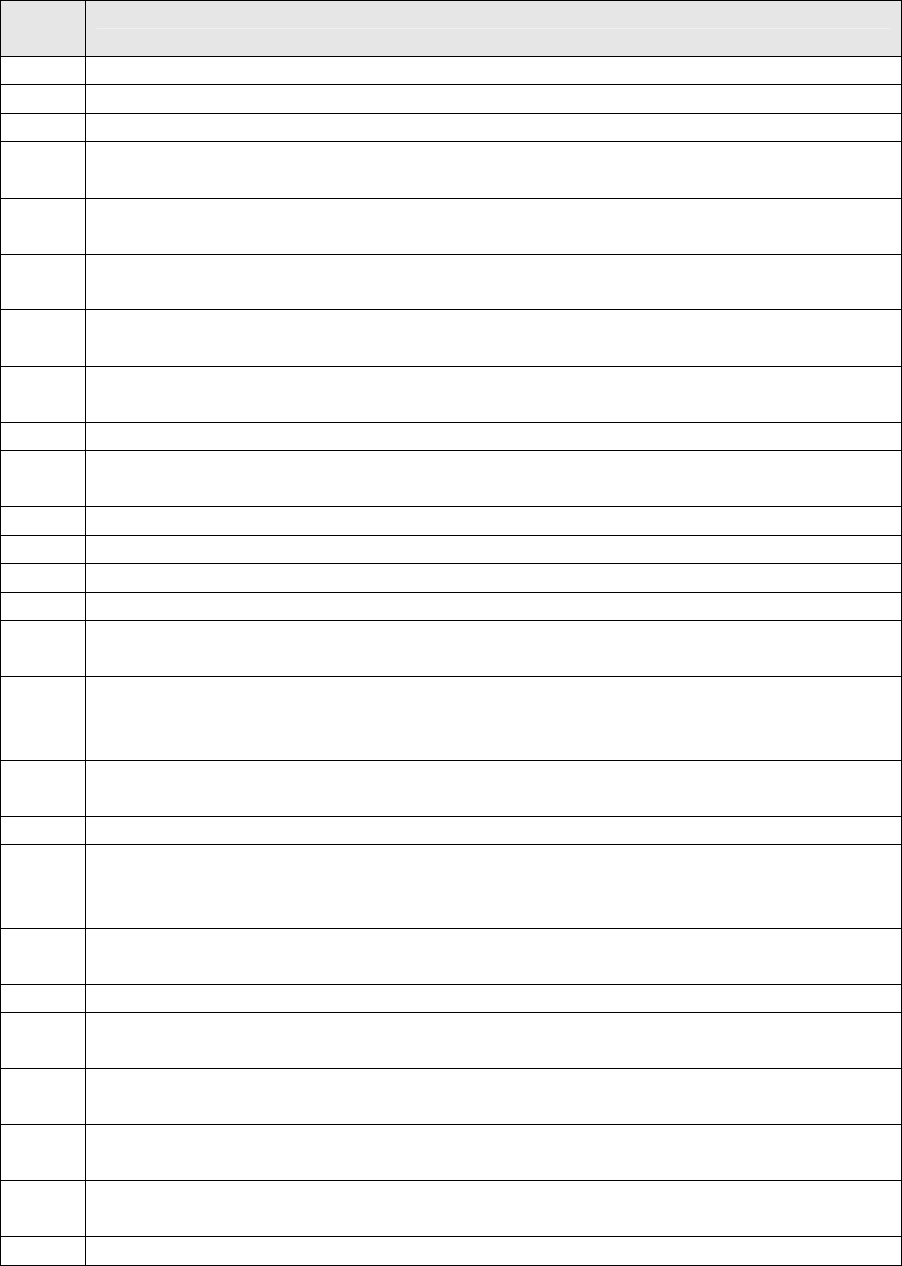
Copyright © TANDBERG 2008 Reference Guide Version 3.0 rev 3.0 49
11 Fault codes
The MCU has a series of fault codes which are given when a fault occurs during the processing of an XML-RPC
request. While individual method descriptions above give some indication of which faults may occur, below is
a description of all possible fault codes used within this specification, and the usual interpretations.
Fault
Code
Description
1 Method not supported. This method is not supported on this device.
2 Duplicate conference name. A conference name was specified, but is already in use.
3 Duplicate participant name. A participant name was specified, but is already in use.
4 No such conference or auto attendant. The conference or auto attendant
identification given does not match any conference or auto attendant.
5 No such participant. The participant identification given does not match any
participants.
6 Too many conferences. The device has reached the limit of the number of conferences
that can be configured.
7 Too many participants. There are already too many participants configured and no
more can be created.
8 No conference name or auto attendant id supplied. A conference name or auto
attendant identifier was required, but was not present.
9 No participant name supplied. A participant name is required but was not present.
10 No participant address supplied. A participant address is required but was not
present.
11 Invalid start time specified. A conference start time is not valid.
12 Invalid end time specified. A conference end time is not valid.
13 Invalid PIN specified. A PIN specified is not a valid series of digits.
14 Unauthorised. The requested operation is not permitted on this device.
15 Insufficient privileges. The specified user id and password combination is not valid for
the attempted operation.
16 Invalid enumerateID value. An enumerate ID passed to an enumerate method
invocation was invalid. Only values returned by the device should be used in enumerate
methods.
17 Port reservation failure. This is in the case that “reservedAudioPorts” or
“reservedVideoPorts” value is set too high, and the device cannot support this.
18 Duplicate numeric ID. A numeric ID was given, but this ID is already in use.
19 Unsupported protocol. A protocol was used which does not correspond to any valid
protocol for this method. In particular, this is used for participant identification where an
invalid protocol is specified.
20 Unsupported participant type. A participant type was used which does not
correspond to any participant type known to the device.
21 No such folder. A folder identifier was present, but does not refer to a valid folder.
22 No such recording. A recording identifier was present, but does not refer to a valid
recording.
23 No changes requested. This is given when a method for changing something correctly
identifies an object, but no changes to that object are specified.
24 No such port. This is returned when an ISDN port is given as a parameter which does not
exist on an ISDN gateway.
101 Missing parameter. This is given when a required parameter is absent. The parameter in
question is given in the fault string in the format "missing parameter - parameter_name".
102 Invalid parameter. This is given when a parameter was successfully parsed, is of the


















